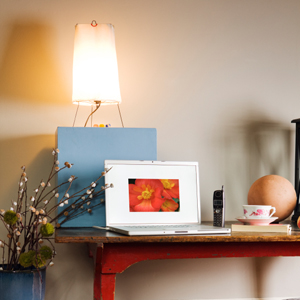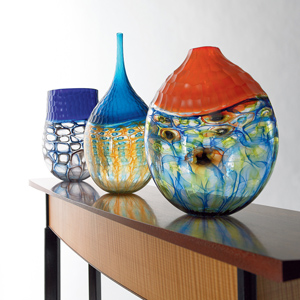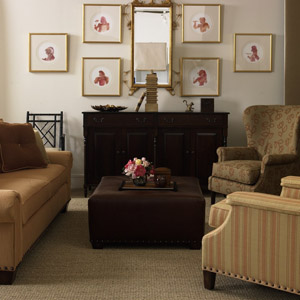Integrate art into the color scheme of your room. Photo: Sunbrella
Think Beyond Paintings
The art in your home doesn’t just have to be paintings hanging on the walls. It can include pottery, sculptures, photography, tapestries, collages and much more.
-
The Art of Design
Accentuate your home’s décor with beautiful and unique collections of art.
- by Mary Best
Let’s face it: Many people feel intimidated by the world of art. Yes, we appreciate the luminosity of a Rembrandt painting and admire the hues in Tiffany’s stained glass, but when it comes to our homes, most of us shy away from incorporating art into our décor because of what we expect the word “art” to mean. But according to Lisa Bayne, CEO of Artful Home, “there are so many types of art for people to live with. And they do not all live on the wall.”
Art As a Design Tool
People love being surrounded by beautiful things, and people often design a room around a piece of art—whether it’s art on the wall or on the floor; a piece of pottery, ceramics or sculpture; or glass or wood. A new work of art often inspires you to look at other pieces in a room differently and change the relationship of pieces or change the groupings in a room. Designing a room with art enables you to create your own personal space. “That’s why art is an extremely personal purchase,” says Bayne. “It becomes a way for you to express your personality.”
Nontraditional Collections
Personalize a room by displaying a specific collection you have. It could be a type of object, technique an artist uses or a style. You can tell a lot about a person by the objects they collect. For example, Bayne collects artist-made teapots. “People learn an awful lot about me when they see teapots in my office,” she says. “A teapot expresses a domestic side of me, but the quirky nature of many of the teapots also says that I like things that are whimsical and funny.”
On Display
While there are no set rules for displaying art, maximizing the effect a piece has in a room depends on the specifics of the piece and the medium. Bayne says to notice space, the relationship between one item and another, and especially lighting. Effective lighting will call attention to an object or painting. With that in mind, “Give every piece its due,” she says. “I really encourage people to experiment with ways of living with art. That’s what it’s all about.”
In Living Color
Integrating a piece of art into the color scheme of a room depends on why you selected the piece. Does the art speak to you or reflect your personality or did you buy it because it fills a particular space in a room? “Those reasons,” Bayne points out, “will act as a springboard to how you decorate around that work.” Also, consider being bold and expressive in the color palette you select to complement the art you have in a particular room. “Walls don’t always have to be white,” Bayne says. Complementary colors—those opposite one another on the color wheel—jazz up a room and add punchy accents.




